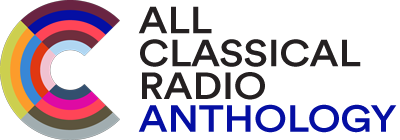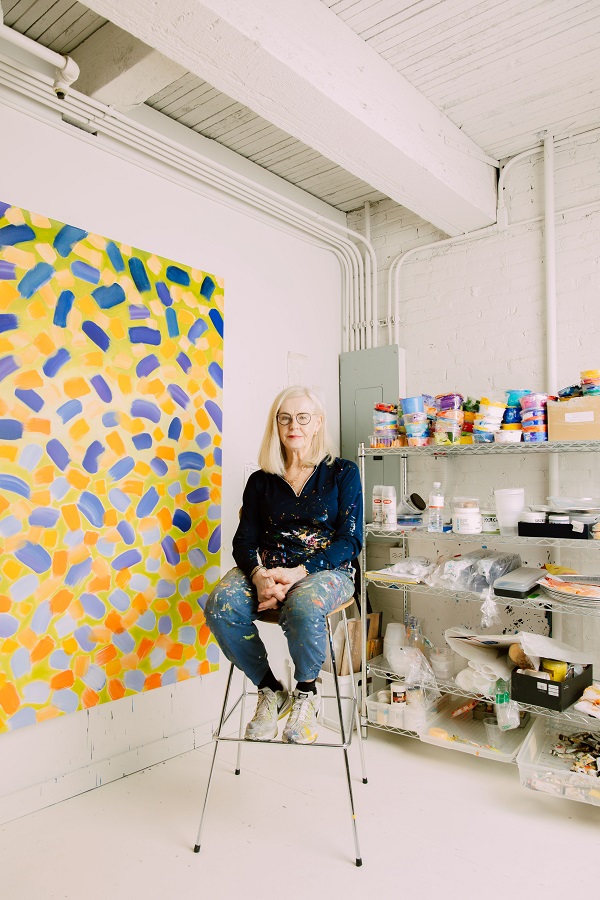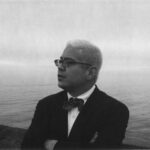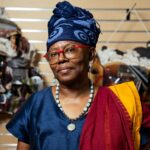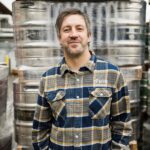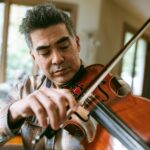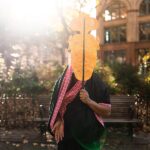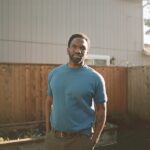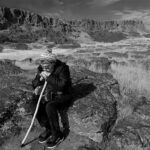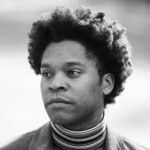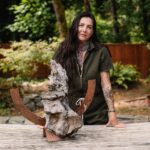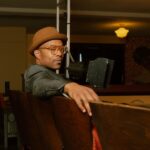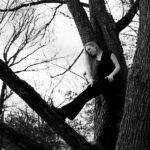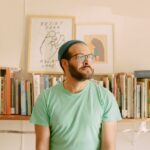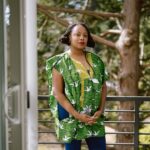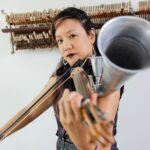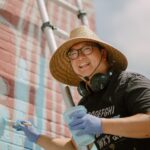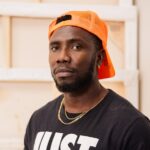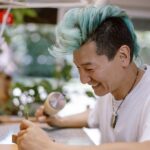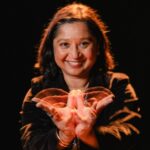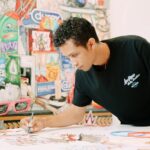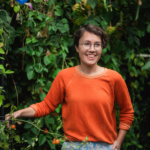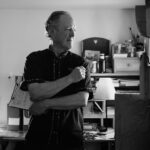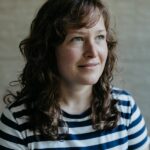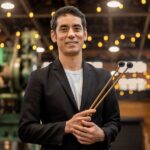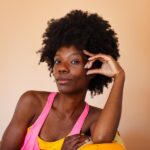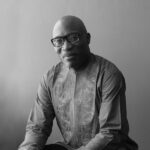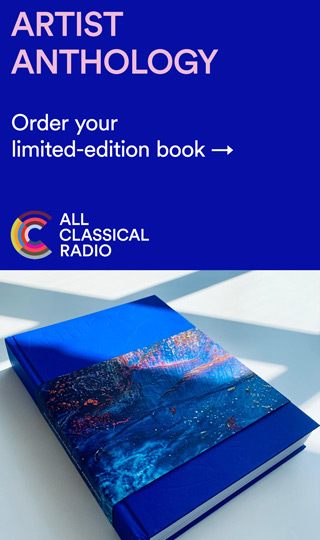Written by Anna Vodicka; Photographed by Frankie Tresser
Over Zoom, Mary Chomenko Hinckley springs to model her uniform—head-to-toe black, with paint splatters—before spinning the camera buoyantly around her studio. Even over the flattening medium of a video call, it’s clear why the word that trailed Hinckley’s name around Anthology headquarters was uplifting.
At age 72, Hinckley’s artwork, too, achieves a kind of ascension. The daughter of Ukrainian refugees, Hinckley hauls weighty issues of politics, war, and the environment into her studio—and into galleries and public spaces that commission her work across the West—where she carves and paints her way toward perspective shift. Take her signature coyotes, cast in hot pink or turquoise resin, or poised in bronze along Beaverton’s Crescent Connection trail; the animal’s steady gaze begs us to kneel, to meet the coyote eye-level. Take “Ukrainian Diaspora, 2022,” a painted flag, hundreds of blue and yellow marks lifting like dandelion seeds off the canvas.
In 2020, after years of supporting the arts at Portland State University, Hinckley and her husband established an endowed Professorship of Choir, Music Education & Social Justice at PSU—a gift intended to uplift young voices for years to come.
Below, zoom through time and artmaking with Mary Hinckley, in her own words, collaged from our conversation. Picture her before two wall-sized paintings, gradients of orange and blue, a deconstructed sunset.
-Anna Vodicka
Mary Chomenko Hinckley
Portrait of the Artist as a Young Girl
I was about seven, home sick from school. I was lying in bed next to a hot radiator, and I had a box of crayons, which was precious. My parents immigrated to the U.S. from Ukraine after World War II. We didn’t have toys, but we found junk to play with and would make things, and I did have my precious box of crayons.
I took a crayon and melted it on the radiator—and it was so beautiful.
Then I took the whole box and melted all of them on the radiator.
I don’t know if you’ve ever melted a crayon. It smells terrible. But I thought, All these overlapping, dripping colors! The process was mesmerizing.
My parents were not pleased. Melted crayons stain.
But that was my first masterpiece.
On Resilience
Now, the whole world knows, but before the recent Russian invasion, people couldn’t find Ukraine on a map if you asked them.
My parents came from near Lviv, in Western Ukraine. My father went to military school. My mother was studying to be a math teacher. She was in her second year at university when the war broke out. During a brief visit, one of their neighbors said, “Tomorrow they’re going to come for you.” They fled in the middle of the night, like millions of other people.
That painting of the Ukrainian flag? That’s about five million people leaving Ukraine since 2022, taking whatever route they could to escape to safety.
My parents ended up in a refugee camp in northern Germany, on the Danish border, for three years. They did agricultural work, hard labor where there wasn’t enough food.
Of course, my parents didn’t talk about that.
Coyotes are survivors. People have been trying to kill coyotes for a long time. They’ve tried all kinds of ways to exterminate them because they’re pests. No one puts a coyote head over their mantle.
Coyotes have changed, morphed, adapted to new environments, to new food sources. They hunt singularly. They hunt in a pack. I like to think they keep the rats and mice in check. They add to our ecosystem. They continue to thrive.
On Process—or, On Wrestling the Devil
